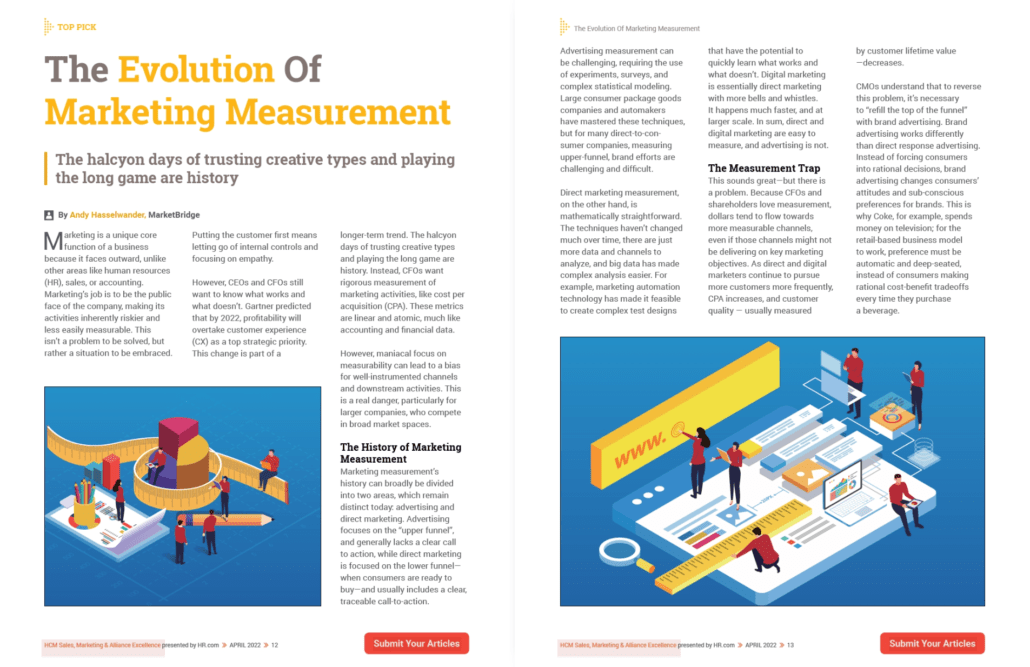The Evolution Of Marketing Measurement
[As technology and media have rapidly evolved over recent decades, marketers have had to stay alert to ensure success throughout. Our analytics expert Andy Hasselwander shared his expertise with HR.com on the evolution of marketing measurement, including what it looks like today.]
Marketing is a unique core function of a business because it faces outward, unlike other areas like human resources (HR), sales, or accounting. Marketing’s job is to be the public face of the company, making its activities inherently riskier and less easily measurable. This isn’t a problem to be solved, but rather a situation to be embraced. Putting the customer first means letting go of internal controls and focusing on empathy. However, CEOs and CFOs still want to know what works and what doesn’t. Gartner predicted that by 2022, profitability will overtake customer experience (CX) as a top strategic priority. This change is part of a longer-term trend. The halcyon days of trusting creative types and playing the long game are history. Instead, CFOs want rigorous measurement of marketing activities, like cost per acquisition (CPA). These metrics are linear and atomic, much like accounting and financial data.
However, maniacal focus on measurability can lead to a bias for well-instrumented channels and downstream activities. This is a real danger, particularly for larger companies, who compete in broad market spaces. The History of Marketing Measurement Marketing measurement’s history can broadly be divided into two areas, which remain distinct today: advertising and direct marketing. Advertising focuses on the “upper funnel”, and generally lacks a clear call to action, while direct marketing is focused on the lower . . .
To read the full article on HR.com, click here.

 MarketBridge and HR.com
MarketBridge and HR.com


 destinationcrm and MarketBridge
destinationcrm and MarketBridge